lies like truth: January 2010 Archives
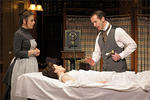 The winner of the 2009 Will Glickman Award for best play to have had its world premiere in the Bay Area is playwright Sarah Ruhl for In the Next Room (or the vibrator play). The work premiered last February at Berkeley Repertory Theatre in a production directed by Les Waters and then transferred to New York.
The winner of the 2009 Will Glickman Award for best play to have had its world premiere in the Bay Area is playwright Sarah Ruhl for In the Next Room (or the vibrator play). The work premiered last February at Berkeley Repertory Theatre in a production directed by Les Waters and then transferred to New York.It's always such a privilege being part of the panel of local theatre critics that selects the winner of the prize each year. I am absolutely thrilled about our decision, though there was some tough competition from such contenders as Charlie Varon for Rabbi Sam and Ann Randolph for Loveland (both of which premiered at The Marsh.)
The Vibrator Play was one of the theatrical highlights of 2009 for me for its combination of brashness and delicacy, its exploration of the pros and cons of so-called "technological advancement" and its playful-soulful take on human sexuality.
The Will Glickman Award has been given annually since 1984. Created to honor playwright and screenwriter Will Glickman, the goal of the award is to encourage new plays and their production as invaluable investments in American theatre. Theatre Bay Area, the nation's largest regional theatre service organization, has administered the award since 2004.
Berkeley Rep debuted three previous winners: Hurricane / Mauvais Temps by Anne Galjour; The People's Temple by Leigh Fondakowski with Greg Pierotti, Stephen Wangh, and Margo Hall; and Yankee Dawg You Die by Philip Kan Gotanda. Other playwrights who have been honored include Liz Duffy Adams, Adam Bock, John Fisher, Brian Freeman, Doug Holsclaw, Dan Hoyle, Denis Johnson, Cherrie Moraga, Brighde Mullins, Peter Sinn Nachtrieb, Octavio Solis, Charlie Varon, and Erin Cressida Wilson.
The selection committee for this year's award included the following journalists: Robert Avila, SF Bay Guardian; Karen D'Souza, San Jose Mercury News; Robert Hurwitt, San Francisco Chronicle; Sam Hurwitt, Marin Independent Journal; and yours truly.
Here is my review of the play from SF Weekly.

 Patti Smith only heard the news about her friend Howard Zinn's death shortly before going on stage at the Herbst Theatre in San Francisco last night to talk about her new book, answer questions and sing a couple of songs.
Patti Smith only heard the news about her friend Howard Zinn's death shortly before going on stage at the Herbst Theatre in San Francisco last night to talk about her new book, answer questions and sing a couple of songs.Most people in the audience including myself, hadn't yet caught wind of Zinn's passing. A wave of sorrow and shock spread across the City Arts & Lectures audience when moderator Kevin Berger mentioned Zinn.
Many people know about Smith's close ties with the likes of Robert Mapplethorpe and Sam Shepard. But her friendship with the activist and author of The People's History of The United States was less familiar. Smith stayed composed throughout her presentation, even though, according City Arts & Lectures director Sydney Goldstein, she had reacted strongly to the news when she first heard it.
In the most touching moment of her talk, Smith recited the lyrics to her song "People have the Power" in honor of Zinn. Smith said Zinn was particularly fond of that song and would often ask her to sing it or recite the words when their paths crossed.
Smith's recitation came from deep within her. As the verses rolled on, her breath became deeper and the words more rounded and full. What started off as a quiet poem ended up as a full-blown incantation.
Backstage after the talk, Smith remained calm. Slumped on a couch in a wool beanie over her long wavy brown hair, baggy blue jeans tucked into scuffed worker boots and several shapeless sweaters, the great singer and poet was on the phone when I entered. Eventually she looked up. "I was just texting my daughter with the news about Howard," she said, before politely shaking my hand.
People Have the Power
I was dreaming in my dreaming
of an aspect bright and fair
and my sleeping it was broken
but my dream it lingered near
in the form of shining valleys
where the pure air recognized
and my senses newly opened
I awakened to the cry
that the people / have the power
to redeem / the work of fools
upon the meek / the graces shower
it's decreed / the people rule
The people have the power
The people have the power
The people have the power
The people have the power
Vengeful aspects became suspect
and bending low as if to hear
and the armies ceased advancing
because the people had their ear
and the shepherds and the soldiers
lay beneath the stars
exchanging visions
and laying arms
to waste / in the dust
in the form of / shining valleys
where the pure air / recognized
and my senses / newly opened
I awakened / to the cry
Refrain
Where there were deserts
I saw fountains
like cream the waters rise
and we strolled there together
with none to laugh or criticize
and the leopard
and the lamb
lay together truly bound
I was hoping in my hoping
to recall what I had found
I was dreaming in my dreaming
god knows / a purer view
as I surrender to my sleeping
I commit my dream to you
Refrain
The power to dream / to rule
to wrestle the world from fools
it's decreed the people rule
it's decreed the people rule
LISTEN
I believe everything we dream
can come to pass through our union
we can turn the world around
we can turn the earth's revolution
we have the power
People have the power ...
 The most palpable thing about watching Yo-Yo Ma and Emanuel Ax perform a recital of works by Schumann, Chopin and Peter Lieberson last night at Davies Symphony Hall was the rapport between the two artists. They behaved like they were sitting in the living room of one of their homes playing together for fun. They looked at each other almost more often than they looked at their music. Beatific smiles crossed their faces every now and again. The pleasure of their music-making was as evident as the gorgeous, sensitive sound they made together.
The most palpable thing about watching Yo-Yo Ma and Emanuel Ax perform a recital of works by Schumann, Chopin and Peter Lieberson last night at Davies Symphony Hall was the rapport between the two artists. They behaved like they were sitting in the living room of one of their homes playing together for fun. They looked at each other almost more often than they looked at their music. Beatific smiles crossed their faces every now and again. The pleasure of their music-making was as evident as the gorgeous, sensitive sound they made together.The second most palpable thing about the concert was how the pair managed to transform Davies Symphony Hall (which was packed to the gills) into an intimate space. Having witnessed many recitals in the venue in the past, I did't think this was possible -- I'd written it off as one of the least convivial spaces for small ensemble or solo music in town. Now I am forced to reevaluate my opinion.
I'm on a campaign to document street art in San Francisco. There is some beautiful work out there but it comes and goes so quickly that I fear that if I don't document it, it will be forgotten. At the moment, it seems like the lifespan of most of the pieces I see is between one and three weeks. One of these pictures (the one with the two women embracing) was gone the day after I snapped it.



 It's so often the case out here on the West Coast that by the time an arts happening reaches us, it's been so talked about that it can feel stale or overexposed before it even arrives. This happens a lot with touring Broadway shows (e.g. Doubt and August: Osage County.) The hype can have an adverse affect on the productions, setting expectations too high which often leads to disappointment.
It's so often the case out here on the West Coast that by the time an arts happening reaches us, it's been so talked about that it can feel stale or overexposed before it even arrives. This happens a lot with touring Broadway shows (e.g. Doubt and August: Osage County.) The hype can have an adverse affect on the productions, setting expectations too high which often leads to disappointment.This weekend's appearance of Morphoses/The Wheeldon Company at San Francisco's Yerba Buena Center for the Arts could have had the same negative results. The starry British choreographer's company has been the toast of the London and New York dance worlds since being founded in 2007. But despite the hype, I found myself completely engrossed in the company's performance.
With the exception of the poor acoustics which made the recorded music in two of the pieces sound very tinny, the four works presented by the company consumed the senses. Live piano and harpsichord accompaniment in the Wheeldon-choreographed "Continuum" and "Rhapsody Fantasie" created a sense of fullness and spaciousness. There's a wonderful mix of refinement and earthiness in Wheeldon's approach to choreography. At one moment, limbs are fully extended and toes perfectly pointed; the next, the dancers are flexing their feet in crumpled postures or moving around on the floor like insects.
I also was completely engrossed by the variety of the program, which veered between the purity of line in "Continuum", the lush romance of the duet "Distant Cries" (choreographed by Edwaard Liang), humor and bravura in "Bolero" (choreographed by Alexei Ratmansky) and the fiery boldness of "Rhapsody Fantasie."
Believe the hype: I hope the company comes back this way again soon.
 It seems odd to me that an artform should be defined by the space in which it is presented rather than anything intrinsic to the art itself. But this seems to be the case with cabaret. The word literally means "room". Here's the definition from the Merriam-Webster online dictionary:
It seems odd to me that an artform should be defined by the space in which it is presented rather than anything intrinsic to the art itself. But this seems to be the case with cabaret. The word literally means "room". Here's the definition from the Merriam-Webster online dictionary:Main Entry: cab·a·ret
Pronunciation: \ˌka-bə-ˈrā, ˈka-bə-ˌ\
Function: noun
Etymology: French, from Middle French dial. (Picard or Walloon), from Middle Dutch, alteration of cambret, cameret, from Middle French dial. (Picard) camberete small room, ultimately from Late Latin camera -- more at chamber
Date: 1655
1 archaic : a shop selling wines and liquors
2 a : a restaurant serving liquor and providing entertainment (as by singers or dancers) : nightclub b : the show provided at a cabaret
There's only a small scene here in San Francisco. Mostly it's based out of a venue called The Rzazz Room, a low-ceilinged nook in a corner of the Hotel Nikko downtown. But other venues host cabaret-like events such as Yoshi's, Bimbo's, The Exit Theatre, The Eureka Theatre and the Marine's Memorial Theatre.
It's really a very amorphous artform that seems to feed on the outer edges of other more well-defined genres such as musical theatre, jazz and singer-songwriting. Few artists these days can be said to be truly indigenous to cabaret. I suppose that's not surprising when the word itself means a container for art -- the walls between which it exists -- than the art itself.
Yet at it's most pure, cabaret isn't a place to get tipsy while watching washed-up Broadway people slug their way huskily through "Summertime" and "Somewhere Over a Rainbow." Although cabaret attracts artists from many, many different backgrounds, there are in fact specific parameters to presenting a cabaret performance that help to define the artform beyond its existence in a particular space.
One factor is the structure of a cabaret show which often, though not always, vacillates between comic and serious songs.
Another consideration is the choice of a signature song which comes to define an artist and acts as a sort of calling card for him or her.
A third staple of many cabaret performances is an overarching theme. This helps to give a show shape and sends over a strong message, instead of being a meandering collection of songs, which would make the experience a concert rather than a cabaret. For example, a recent show I attended at the Rzazz Room by Andrea Marcovicci, focused exclusively on the composer Johnny Mercer. Meanwhile, a performance I saw by Carly Ozard took a more personal theme -- the artist built her lighthearted "Bewitched Bothered and Bipolar" program around the highs and lows of being bipolar.
And another defining characteristic of cabaret is the artist's rapport with the audience. Speaking is as important a feature of a performance as singing. The best artists can effortlessly riff with their audiences and find the perfect segues into and out of each song.
These days, cabaret seems to attract an older or gay crowd. It's largely ignored by everyone else. This is a shame. There's something so special and intimate about sharing a performance with a true cabaret artist. "Share" is the operative word here -- I can't think of another type of performance that enables the audience to be as closely entwined with the artist as does cabaret.
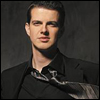 Today I'll be a guest on Sound Check, WNYC's daily talk show all about music. Sound Check is currently doing a series all about singing and today's show is focusing on men who sing high, which is a lovely coincidence as I'm devoting tomorrow's episode of VoiceBox to the very same topic! I'm excited to be on air with one of my favorite countertenors, Philippe Jaroussky. Listen in at 93.9 FM or via the live webstream on the WNYC website.
Today I'll be a guest on Sound Check, WNYC's daily talk show all about music. Sound Check is currently doing a series all about singing and today's show is focusing on men who sing high, which is a lovely coincidence as I'm devoting tomorrow's episode of VoiceBox to the very same topic! I'm excited to be on air with one of my favorite countertenors, Philippe Jaroussky. Listen in at 93.9 FM or via the live webstream on the WNYC website.
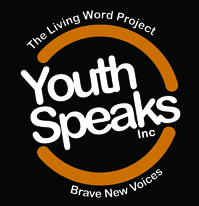 I'm probably going to make myself very unpopular with this blog post. For what kind of cold-hearted arts critic would say anything negative about Youth Speaks, one of the the leading (if not the leading) nonprofit presenter of teen-oriented spoken word performance, education, and youth development programs in the country?
I'm probably going to make myself very unpopular with this blog post. For what kind of cold-hearted arts critic would say anything negative about Youth Speaks, one of the the leading (if not the leading) nonprofit presenter of teen-oriented spoken word performance, education, and youth development programs in the country?Founded in the Bay Area in 1996, Youth Speaks has done an amazing job of reaching out to young people and helping them to channel their thoughts and beliefs into text, which the youngsters (mostly teens) can share aloud at various Youth Speaks events like poetry slams and youth poetry festivals. The organization has achieved considerable fame around the US. According to the Youth Speaks website, it works with 45,000 teens per year in the Bay Area alone, and has created partner programs in 36 cities across the country.
I've heard Youth Speaks poets on several occasions at various events around San Francisco, Berkeley and Oakland. I've always been impressed by the poets' level of commitment, passion and confidence. Every now and again, I even hear amazing poetry delivered so powerfully that the words cut right to the core.
But at the organization's annual Martin Luther King celebration in San Francisco on Monday, where I was able to watch and listen to many Youth Speaks poets one after another, I found myself less caught up in the performers' rabble rousing enthusiasm than I was by their lack of basic delivery skills.
An assortment of young poets, some of them with more highly developed artistic abilities than others, got up to share their work. What mostly got in the way of my engagement with the event was the fact that half of the time, I couldn't make out what the speakers were saying. Some of them spoke too fast, while others managed to mumble, even though they were miked. Also, I'm fine with young poets using the stage as therapy if they feel the need -- at least a few performers gave tortured diatribes on being abused by their parents as children.
But whatever kind of poem you put out there in the world, if you're going to put it in front of people, it should be a real performance i.e. learn the poem from memory. Standing on stage staring at a sheet of paper and stumbling over words is not my idea of performance poetry. The Youth Speaks mentors and instructors should insist that the poets learn their work by heart and pay more attention to the performative aspects of live poetry. After all, even if some of the speakers consider what they're doing to be therapy, the people out there in the audience are usually looking to be entertained.
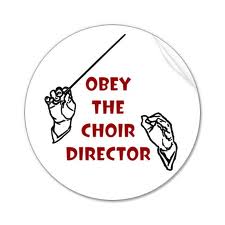 For most people, the word "choir" evokes an image of a group of people standing together singing. Last weekend, I learned that the term can also apply do dance.
For most people, the word "choir" evokes an image of a group of people standing together singing. Last weekend, I learned that the term can also apply do dance.Of the many beautiful and innovative qualities of Janice Garrett and Charles Moulton's rapturous dance piece, The Illustrated Book of Invisible Stories, the most memorable is the "movement choir." The choreographers assemble a group of 18 women who appear on stage at the start of the work standing in rows on risers. When the work begins, they all make beautiful patterns with their bodies to the sound of a live musical score played by eight musicians as six soloists dance before them.
The texture of the movement choir is indeed chorus like. The work in harmony with and at some times in counterpoint to the soloists. At one point, a soloist gets swept up by the movement choir, as if she's being carried off the ground by some powerful elemental force. The group carefully and almost imperceptibly shunts her body sideways and upwards. At another point, the movement choir becomes a long serpent of bodies bent over one another and moving in perfect synch through space unstoppably. Anything that gets caught in between its ever-trundling legs gets shaken up and destroyed. The effect of the hapless soloists getting caught up in the monster's belly is at once comic and sinister.
Garrett and Moulton haven't created a narrative work with The Illustrated Book of Invisible Stories. But I found myself thinking of the movement choir as a force of nature or an energy field that's ever-present in our lives but completely unknowable. I guess the best singing chorales in the world convey the same feeling when they sing masterworks like Monteverdi's Vespers, Tallis' Spem in Allium or Mozart's Requiem. Whether standing still and singing, or keeping their mouths shut and moving, choirs at their best can make us understand the word "harmony" in a profound way.
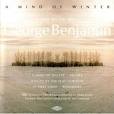 Just as it's often the case that playwrights and screenwriters aren't always the best people to direct their own plays and movies, so composers don't necessarily do an optimal job leading performances of their works from the podium.
Just as it's often the case that playwrights and screenwriters aren't always the best people to direct their own plays and movies, so composers don't necessarily do an optimal job leading performances of their works from the podium.This hypothesis was borne out over the weekend when I saw the British composer George Benjamin conducting the San Francisco Symphony in two of his pieces -- "Duet", a work for piano and orchestra written in 2008, and "Ringed by the Flat Horizon", which the composer wrote at the very start of his career in 1980.
Unlike the previous concert of Benjamin's work which I saw last week under the baton of David Robertson, this composer-helmed concert lacked, for want of a better word, oomph. Benjamin conducted both of his pieces as if sewing a pair of delicate lace curtains. The soundscape shimmered and was extremely intricate. But it all sounded very much the same. Robertson, on the other hand, brought out the extreme contrasts in the composer's works. We heard filigree and fire in Benjamin's music as interpreted by Robertson. But the contrasts were subdued in the composer's hands. Perhaps it's a case of the creator "not being able to see the wood for the trees"?
PS: Read Stephen Smoliar's response to my blog post here.
 The media landscape is in such a mess at the moment that media organizations should be shoring up their energies, focusing on turning out high quality product and finding ways to make sure that that product reaches an audience. There's strength in numbers, so it makes sense for media organizations of a similar kind to look for ways to partner with each other and help each other out.
The media landscape is in such a mess at the moment that media organizations should be shoring up their energies, focusing on turning out high quality product and finding ways to make sure that that product reaches an audience. There's strength in numbers, so it makes sense for media organizations of a similar kind to look for ways to partner with each other and help each other out.The reality, however, is very different. I'm seeing nothing but bitterness and resentment across the board. Local media outlets here in the Bay Area are harboring pointless and petty rivalries for one another, rivalries which they can ill-afford at a time when resources are at a premium and time, money and energy ought to be funneled in more productive ways.
Interestingly, the main source of disgruntlement seems to be happening not at the level of the big players in town (who are all suffering just as much as the small fish), but rather in the terrain of alternative weeklies, blogs and public radio stations. This seems ridiculous to me. You'd think these Bay Area-based liberal-leaning organizations would have more of an open mind and want to help each other out. But a spirit of mean-spiritidness is rife.
If any of these organizations hopes to get through the next couple of difficult years in tact, they need to start being less insular and lose the misplaced camp mentality, which can only lead to their mutual destruction.
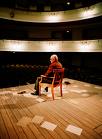
As in many other parts of the country, being a theatre professional in the Bay Area isn't easy. But it strikes me that theatre directors have a particularly tough time of it here.
The main issue they have to contend with that's specific to the Bay Area (although may also be the case elsewhere) is a lack of medium-sized venues to scale up their craft. There are a ton of small spaces and a few big ones. But very little in between to help blossoming directors make the transition onto larger stages.
Then there are plenty of other factors from finding money to developing audiences that make doing the job of a theatre director hard just about anywhere. One thing that's struck me lately is that directors are willing to take on any project just to work, even if the project doesn't really suit them. This invariably leads to an end product that, if they're lucky, works out fine, but more often than not, doesn't reflect their talent as a director.
The most professionally satisfying route to working as a theatre director in the Bay Area (though the most slow-burning and by no means the most lucrative -- if any theatre job could even be called lucrative, that is) is probably not the business of being a hired gun, unless the director is at the point in their career when they have completely free reign to choose the work that they want to do. It's still very much a case of assembling a group of like-minded souls and creating work for a self-styled company, whether that be original plays or hand-picked work by other writers.
 One art form which is en vogue at the moment in the Bay Area and elsewhere is the practice of composing and performing new musical scores to accompany silent films.
One art form which is en vogue at the moment in the Bay Area and elsewhere is the practice of composing and performing new musical scores to accompany silent films.One of the highlights of the annual SF International Film Festival is its combination of live rock music and silent film at the Castro Theatre. Recent years have witnessed pairings between Deerhoof and Harry Smith's Heaven and Earth Magic, Lambchop and Murnau's Sunrise, Yo La Tengo and Jean Painlevé's wildlife films, and, last year, Dengue Fever performing the world premiere of their newly composed score for Harry Hoyt's 1925 dinosaur epic The Lost World. Meanwhile, local composers like Jill Tracy write and perform luxuriant noirish scores at cinemas all over the Bay Area.
Because silent film has no dialogue or other sound, the musical score has the potential to stand out much more clearly than in a talkie, which gives composers much more creative leeway in some ways. Yet writing music for this medium has its challenges. The composer must take care not to usurp the pictures with his or her soundscape. He or she can underscore the mood of a scene or perhaps even undercut it if going for a special effect. But the music should always be in service of the images and shouldn't guide audience members emotions in ways that don't fit with the film. Because the filmmakers of these early films are mostly long dead by now, keeping all these elements in check is difficult -- the creator of the movie isn't around to consult with about mood, intention, and other qualities visible on screen.
Last night's San Francisco Film Festival event, Music for Silents, showed how composing for early film can be done well. Musician Steven Severin, co-founder of the 70s British punk band Siouxie and the Banshees and, more recently, a film composer, presented his original score for The Seashell and the Clergyman (1928), a French Surrealist fantasy directed by Germaine Dulac and written by Antonin Artaud.
The film's plot, if it can be said to have one at all, is obscure. The story seems to revolve around a randy Catholic priest whose obsession with women leads him to behave erratically. He rips off a female character's bustier and strangles a fellow priest, among other things. It's no wonder that the British Board of Film Censors called the film blasphemous and banned it.
Severin's electronic score thrums with life throughout the 35-minute film. The pulsations draw us into ourselves. Our breathing slows and before long we find ourselves occupying the same psychological space as the characters. The low church organ-like rumbles suggest the religious landscape of the story. Meanwhile, some fast, scattered phrases create a flighty, bird-like energy. It's as if the music is mimicking the rapid heartbeat of the priest.
The combination of music and visuals reminded me strongly of the Cremaster films of Matthew Barney, owing to the mixture of cold, sepulchral stasis in the composition of some of the images and throbbing score and larger-than-life emotions.

People have long been saying that the cabaret is dead. In some of the larger cities, young performers of one kind or another have been working to resurrect the genre. But what they are calling cabaret isn't really cabaret in the traditional sense of the word. Featuring strip-tease, contortionists and women dressed in frilly bloomers playing rock cello or accordion while singing about the lint they found in their uncle's belly button last week, the acts are closer to standup comedy, burlesque and circus than they are cabaret in the true sense of the word.
Yet there do seem to be a few performers out there who are interested in keeping the flame of traditional cabaret alive. One such performer is Carly Ozard, a young San Francisco-based chanteuse whom I heard for the first time at the Eureka Theatre over the weekend and was blown away by.
Ozard has been performing on the local scene for a while with such musical theater and light opera companies as the Lamplighters and 42nd Street Moon. I've heard her perform in these contexts before. But I had little idea about what a great singer and communicator she was until I experienced her solo act on stage.
Ozard's songlist followed the standard pattern of vacillating from serious to comic to serious to comic songs. Yet there was enough variety in the performance to keep us engaged. Ozard's playlist betrayed a wicked, self-deprecating sense of humor as well as a soft and cuddly side which was tender but never sugary. Her repertoire was smart, full of personality and eclectic with numbers ranging from "Closer to Fine" by Emily Sailers of The Indigo Girls, to a side-splitting bastardization of the Rogers and Hart classic "Bewitched, Bothered and Bewildered". Ozard's version, entitled "Bewitched, Bothered and Bipolar" and adapted by local impresario Tom Orr, was one of the highlights of the show.
Ozard was sick the night she performed at The Eureka Theatre, but she remained the consummate professional throughout. There's a toughness about her which is sassy and likable. "My teacher says that it doesn't look right to drink water out of a bottle on stage," Ozard said at one point, taking slugs from a big plastic bottle. "Well, that's too bad." She also has a natural banter and managed to link the songs with funny and touching anecdotes which moved the show along without getting in the way of the music. In other words, she managed to maintain a good balance between songs and talk.
It's no surprise that Ozard was named Best Cabaret Performer at the Cabaret Showcase Showdown 2009. I predict this performer will go far.
Yet there do seem to be a few performers out there who are interested in keeping the flame of traditional cabaret alive. One such performer is Carly Ozard, a young San Francisco-based chanteuse whom I heard for the first time at the Eureka Theatre over the weekend and was blown away by.
Ozard has been performing on the local scene for a while with such musical theater and light opera companies as the Lamplighters and 42nd Street Moon. I've heard her perform in these contexts before. But I had little idea about what a great singer and communicator she was until I experienced her solo act on stage.
Ozard's songlist followed the standard pattern of vacillating from serious to comic to serious to comic songs. Yet there was enough variety in the performance to keep us engaged. Ozard's playlist betrayed a wicked, self-deprecating sense of humor as well as a soft and cuddly side which was tender but never sugary. Her repertoire was smart, full of personality and eclectic with numbers ranging from "Closer to Fine" by Emily Sailers of The Indigo Girls, to a side-splitting bastardization of the Rogers and Hart classic "Bewitched, Bothered and Bewildered". Ozard's version, entitled "Bewitched, Bothered and Bipolar" and adapted by local impresario Tom Orr, was one of the highlights of the show.
Ozard was sick the night she performed at The Eureka Theatre, but she remained the consummate professional throughout. There's a toughness about her which is sassy and likable. "My teacher says that it doesn't look right to drink water out of a bottle on stage," Ozard said at one point, taking slugs from a big plastic bottle. "Well, that's too bad." She also has a natural banter and managed to link the songs with funny and touching anecdotes which moved the show along without getting in the way of the music. In other words, she managed to maintain a good balance between songs and talk.
It's no surprise that Ozard was named Best Cabaret Performer at the Cabaret Showcase Showdown 2009. I predict this performer will go far.
 I'm constantly struck by the ways in which music, more than any other artform, is capable of stirring up deep personal memories. It's also interesting to see how those memories mutate over time.
I'm constantly struck by the ways in which music, more than any other artform, is capable of stirring up deep personal memories. It's also interesting to see how those memories mutate over time.I as reminded of this once again over the weekend at a San Francisco Symphony concert featuring two works by the British composer George Benjamin who is currently in residency at the Symphony. The conductor was David Robertson.
One of my most powerful memories as a youngster was singing in Jubilation, a piece written by the Benjamin in 1985 for orchestra and children's choir. My school choir joined forces with ensembles from other local schools to sing in the piece. We performed the work in Canterbury Cathedral with the composer conducting. I was about 11 at the time and have vivid recollections of standing amid what seemed like a vast army of children belting out Benjamin's sustained notes to syllables from the solfege system -- "mi, re, so fah, doh!" I was terrified of missing the high C at the climax of the piece. Our teacher worked with us for weeks on trying to hit that note in tune. When we performed the piece, the sound, at least as it has reverberated in my mind across the intervening decades, was nothing short of cataclysmic.
So it was a real treat, and a slight disappointment, to hear the piece performed again on Friday. The choir was from one of the local music-oriented schools, The Crowden School. But it was much smaller in size than the ensemble I had sung with in the 80s. As a result, even though the singing was lovely -- and the instrumental and harmonic nuances of Benjamin's intricate score rang clearly -- the piece came across without as much force as it should have. Jubilation sounded more apologetic than jubilant. I don't know whether my memory had inflated the piece of music to a more imposing size than it really was, or whether it genuinely lacked the power I recalled.
Backstage after the concert, I went to say hello to the composer. Looking dapper but casual in beige slacks, a pale blue shirt, a light brown jacket, brown shoes and a lemon yellow tie with his close-cropped white hair sweeping back from his round, boyish face, Benjamin looked more like a self-effacing community college professor than a widely respected composer being celebrated by a major symphony orchestra. Benjamin seemed happy to hear about my experience of singing his piece way back when. I was surprised to hear that Jubilation has only received a couple of other performances since it was written. The composer didn't seem to mind the smaller choir in SF Symphony's performance -- "they did a good job," he generously said (his voice is soft, high-pitched and sing-songy). I got the impression that he thought the piece worked just as fine with a small choir as a big one. But perhaps he was just being kind.
Then we shook hands and he went off down the hall to meet composer John Adams, who was waiting for him with his coat over his arm and a bright red scarf around his neck.
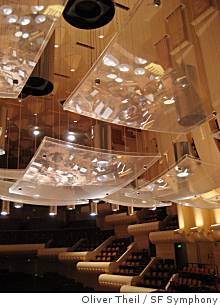 I've always wondered about the futuristic-looking convex panels in Davies Symphony Hall that glide up and down during performances to hone the acoustics of the auditorium.
I've always wondered about the futuristic-looking convex panels in Davies Symphony Hall that glide up and down during performances to hone the acoustics of the auditorium.The San Francisco Chronicle's Joshua Kosman answered most of my questions in his short yet eloquent piece about the panels in yesterday's paper.

 San Francisco's nooks and crannies are full of unusual and often beautifully-rendered bits of street art. The trouble is, even the loveliest bits don't seem to have a long shelf life.
San Francisco's nooks and crannies are full of unusual and often beautifully-rendered bits of street art. The trouble is, even the loveliest bits don't seem to have a long shelf life.Around Thanksgiving last year, a makeshift ply-board wall around a building site on Market Street near Octavia Boulevard caught my eye with its detailed and colorful rendering of six drag queens. I took a picture of it with my iPhone. (See image on the left). The New York Times published the picture on its Bay Area blog page and readers were asked to identify the drag queens depicted by the mystery artist's hand.
Less than a couple of months have passed since I took the picture and the drag queens have disappeared from view. (See image on right, which I took this morning.) You can just about make out a bit of Dame Edna's pink coiff in the top left hand corner of the second image, but otherwise it's as if the drag queens had never existed on that wall. I don't know whether someone scratched them out on purpose or whether they just weathered away. I'm guessing the former because it would probably take more than a few weeks for the graffiti to disappear.
I'm sad about it. Those drag queens brightened up an otherwise ugly building site. They made me smile when I passed them, which I did nearly every day. That's the nature of street art though: here today, gone tomorrow. That's one thing that makes street art like theatre.
At least San Francisco artists are constantly creating new, eye-catching works on our local walls. Here's a beautiful rendering by a mystery painter who initials his or her work "TS". The word painted on the bottom in blue type (illegible in this photograph) is "clairvoyance." I wonder what the artist is trying to say here? Maybe he or she knows that it won't be long before this bespectacled, bearded gent, like the drag queens, will disappear.

 Should the rules that apply to one genre of music apply to another?
Should the rules that apply to one genre of music apply to another?This question popped into my mind last night in the wake of two very contrasting vocal music experiences
I spent the first part of the evening at the KALW radio studios in San Francisco recording a VoiceBox show with jazz and blues singer and jazz historian Kim Nalley about Ella Fitzgerald's voice. Critics are pretty much unanimous in praising Ella for her crystal clear diction, spot-on intonation and careening range. Every song we played during the hour-long recording session for the show substantiated these aspects of the singer's voice.
Later on that evening, I went to The Bottom of the Hill, a music club in the Potrero Hill neighborhood of San Francisco to hear a couple of new bands -- Hey Young Believer and Blood and Sunshine. The members of these electronic indie rock groups, are -- at a guess -- all in their early to mid-20s -- in other words, a bit older than Ella was when she started out.
The musicianship, as far as instrumental beats and riffs go, was lively. Both groups created thick, woven textures with their synthesizers, drums and guitars. But the vocal lines were just about the weakest aspect of the music I heard. I could barely make out a single word the singers were uttering and the voices were raspy, limited in range and flexibility, often out of tune and lacking in support. I wasn't super impressed with either group.
Of course, the singers in some of my favorite bands right now, such as Florence and the Machine and Radiohead, make a habit of poor diction. Somehow this shortcoming matters less, though -- perhaps because the voices have such an extraordinary or unusual timbre, superlative range and are always in tune.
I'm not saying every singer should aim to sound like Ella Fitzgerald. But paying attention to the basics, such as diaphragmatic support and tuning, should probably be a foundation for all singers across all genres.

People commonly lament the downturn in the Bay Area comedy scene, saying that today it's just not what it was in the glory days of the mid 20th century when the likes of Whoopi Goldberg, Robin Williams and Phyllis Diller would make appearances at The Purple Onion and the Hungry I. San Francisco basically became too expensive for comedians in the 1990s and started to take itself a little too seriously as a town. Since then, there hasn't been much in way of local talent to get excited about.
But I am pleased to report that the scene may be coming back to life. I've been getting inklings of this rebirth every now and again. But on new year's eve, thanks to a lineup of comedians arranged by impresario Jill Bourque (pictured), I finally came to the conclusion that the comedy scene is really taking off again in this part of the world.
Bourque's "Not Your Normal NYE" event at The Herbst Theatre (a venue usually reserved for chamber music concerts and lecture series) featured a wonderful line up of genuinely off-beat comedic talent. I was familiar with some of the artists on the roster - such as Will Franken, Brent Weinbach and the We Are Nudes ensemble. I've been following Will's career with interest for a while now and I've caught the Nudes a couple of times in recent months at the Climate Theater. Others on the roster, such as Loren Kraut, Mary Van Note, and Moshe Kasher, were new to me.
All of the acts were different and ranged from chortle-inducing to roll-in-the-aisles funny. I loved Moshe Kasher's acidic delivery, Brent Weinbach's slam-dunk punchlines, Mary Van Note's ditzy and misplaced sexuality and Loren Kraut's delicious nerdiness. We are Nudes play better in a more intimate space, but their act - which consists in part on an absurd, theatrical commentary on each other's personalities and comedic chops -- was still hilarious. Franken, a fervent experimenter, attempted too much audience participation shtick for my liking at Herbst. The audience wasn't quite ready to go there with him and the lack of a follow-spot didn't help his cause when he decided to descend from the stage and talk to a man sitting in the front row of the audience. But as a walking embodiment of multiple personality disorder on today's comedy scene, the comedian still remains unparalleled.
The great thing about Bourque's curatorial effort on new year's eve was the combination of great diversity between the performers' approaches and yet a strong unifying principle which may come to define the San Francisco comedy scene as we enter the second decade of the 21st century. This unifying principle is unconventionality. Not one of the performers simply stood on stage and told jokes. But all of them possessed a madcap absurdity touched with a dash of theatricality.
But I am pleased to report that the scene may be coming back to life. I've been getting inklings of this rebirth every now and again. But on new year's eve, thanks to a lineup of comedians arranged by impresario Jill Bourque (pictured), I finally came to the conclusion that the comedy scene is really taking off again in this part of the world.
Bourque's "Not Your Normal NYE" event at The Herbst Theatre (a venue usually reserved for chamber music concerts and lecture series) featured a wonderful line up of genuinely off-beat comedic talent. I was familiar with some of the artists on the roster - such as Will Franken, Brent Weinbach and the We Are Nudes ensemble. I've been following Will's career with interest for a while now and I've caught the Nudes a couple of times in recent months at the Climate Theater. Others on the roster, such as Loren Kraut, Mary Van Note, and Moshe Kasher, were new to me.
All of the acts were different and ranged from chortle-inducing to roll-in-the-aisles funny. I loved Moshe Kasher's acidic delivery, Brent Weinbach's slam-dunk punchlines, Mary Van Note's ditzy and misplaced sexuality and Loren Kraut's delicious nerdiness. We are Nudes play better in a more intimate space, but their act - which consists in part on an absurd, theatrical commentary on each other's personalities and comedic chops -- was still hilarious. Franken, a fervent experimenter, attempted too much audience participation shtick for my liking at Herbst. The audience wasn't quite ready to go there with him and the lack of a follow-spot didn't help his cause when he decided to descend from the stage and talk to a man sitting in the front row of the audience. But as a walking embodiment of multiple personality disorder on today's comedy scene, the comedian still remains unparalleled.
The great thing about Bourque's curatorial effort on new year's eve was the combination of great diversity between the performers' approaches and yet a strong unifying principle which may come to define the San Francisco comedy scene as we enter the second decade of the 21st century. This unifying principle is unconventionality. Not one of the performers simply stood on stage and told jokes. But all of them possessed a madcap absurdity touched with a dash of theatricality.
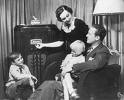 Many creative people don't feel comfortable about attending performances of their own work. I'm not sure why reliving this experience makes them feel awkward. Does it have something to do with embarrassment at being the center of attention? Or perhaps a fear that people won't respond positively?
Many creative people don't feel comfortable about attending performances of their own work. I'm not sure why reliving this experience makes them feel awkward. Does it have something to do with embarrassment at being the center of attention? Or perhaps a fear that people won't respond positively?I got a small taste of this feeling last week as the inaugural broadcast of my new public radio show all about the art of singing, VoiceBox, loomed closer. The series, which runs every Friday evening from 10pm-11pm Pacific Time, launched on New Year's day. I hadn't ever listened to any of the five pilot broadcasts which aired last summer; somehow I just couldn't bring myself to.
But the journey between then and the official launch last week was such a momentous one for me (as a result of all the thinking, fundraising and other activities involved in starting a new project of this sort) that I felt I needed to not only listen in to the show, but also to mark the occasion somehow.
So it was with a combined mixture of mild reluctance, tremendous excitement and a big dollop of fear, that I invited a bunch of friends over on Friday evening for an impromptu VoiceBox listening party.
Girded by cheese and crackers, homemade brownies and prosecco cocktails, the event went rather well. One friend remarked about how sweetly old-fashioned it was to huddle around the wireless listening to a show with a group of people (well, we huddled around my laptop, but the effect was much the same as sitting in front of a radio in the pre-television era.) People seemed to respond positively. For my part, I managed to get through the hourlong broadcast without cringing too much.
And I was glad I listened, as I learned a lot from putting myself through the recording. Some aspects could use improvement: There were times when I sounded too much like I was reading. I need to work on sounding a little less canned. Other aspects of the show, I quite enjoyed. The mad, eclectic playlist made me happy, as did the fact that I didn't sound rushed.
I don't know how often I'll get to listen to the show "live" in the coming weeks -- my arts reviewing schedule will very likely prevent it -- but I should probably make a point of tuning in after the fact from here on in. Listening to one's own creative efforts isn't the most comfortable experience in the world, but you can learn a lot from doing so.
 Calling all lovers of vocal music!
Calling all lovers of vocal music!VoiceBox, a new public radio series which I am producing and hosting on behalf of NPR-affiliated station KALW 91.7 FM, is launching tonight!
VoiceBox kicks off on KALW 91.7 FM San Francisco at 10pm Pacific Time with a show entitled "why we sing." The first official program in the new series all about exploring the art of song, "why we sing" examines the basic impulses underpinning human beings' apparent yen for bursting into song and features a very eclectic playlist including tracks by duetting gibbons, Inuit throat singers, the San Francisco Gay Men's Chorus, Sting, Anonymous 4 and many others. There's even a montage of Bay Area people singing in the shower which is absolutely not to be missed.
If you'd like to listen, please tune in tonight at 10pm PST via the dial or via live webstream at www.kalw.org. I also plan to have the recording of the show on the VoiceBox website before too long, so if you miss it tonight, you'll be able to catch it there. Short podcasts packed with news and music excerpts will also be coming soon to further enrich your VoiceBox listening experience.
In other, but not unrelated news: I am soliciting input for the January 15 show, which is all about community choirs. (January 8 is devoted to exploring the voice of the one and only Ella Fitzgerald with a special guest, jazz and blues vocalist Kim Nalley.) If you sing in -- or know of -- fabulous community (ie non-professional) vocal ensembles both in the Bay Area and elsewhere including abroad, please get in touch. Even better: please email me a couple of tracks of the group(s) for possible inclusion on the playlist for the show. I would need to receive all recordings by the end of the week - ie Friday Jan 8.
Finally, I am looking for editorial support to help take the VoiceBox website to the next level. If you know of any vocal music-savvy person with strong writing and editing skills who fancies donating a couple of hours of their week to a good and fun cause, please point them in my direction.
